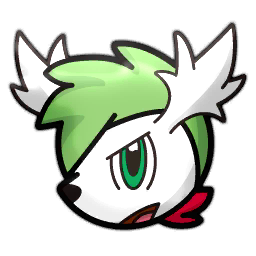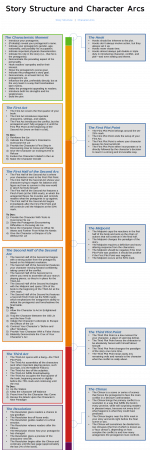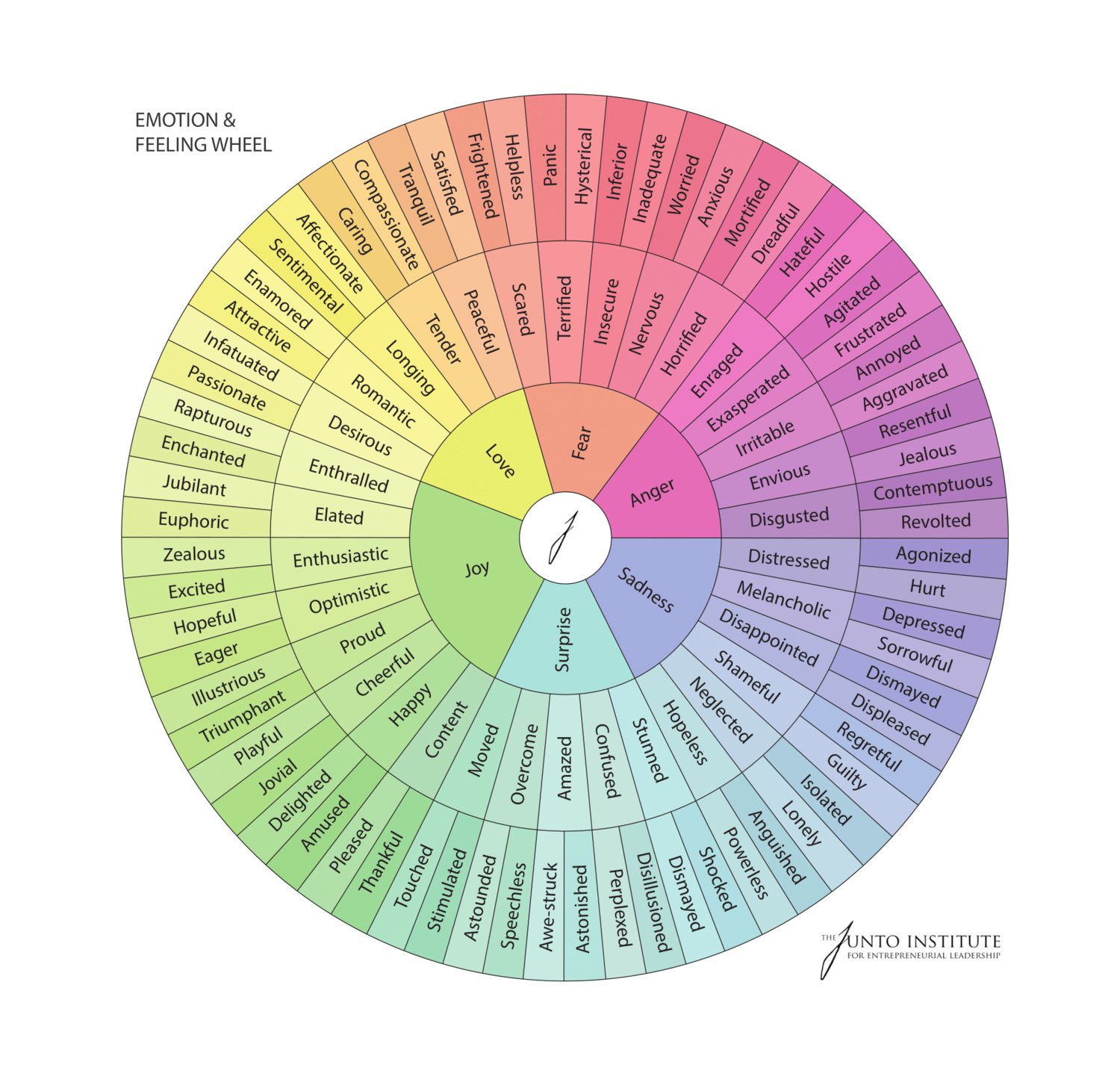WildBoots
Don’t underestimate seeds.
This is the place to share any writing resources you've found or created! I'll do my best to comb through posts and archive them (sorted alphabetically), but you can also feel free to just slap a new post on the thread if you've got something you think folks could use. If you've got something you want me to add to this main post, help me out by letting me know what kind of resource it is, what you like about it, what it's useful for, etc.
You might also check out the Fic Rec and Review Archive.
Advice for Writing Pokemon CharactersNone yet!
Advertising Your FicNone yet!
Podcasts
Prompts
Other Tools
If you're in a place where buying a writing guide is an option, OSJ really strongly recommends these books! (You might also look for a copy at your local library.) The other resources listed here are free, though. She also cannibalized a lot of the advice and prompts from these guides into her writing guide (above).
Book Reviews ~ WRITERS HELPING WRITERS® - "I highly recommend looking into the Writers Helping Writers series of books. I have The Emotion Thesaurus (2nd edition) and The Urban Setting Thesaurus, and they've been helpful. I can take some pictures if you want."
You might also check out the Fic Rec and Review Archive.
General Writing Guides
- Brock, Ellen (Youtube channel, blog) - She's a novel editor with a lot of great advice on almost any topic you can think of.
- The Great Swampy Middle by Jim Butcher - What to do when you're lost and wandering in the middle of your story.
- "Episodic Fiction: Another Way to Tell a Story" by Dan Holt and Pen Campbell. Lays out a number of useful tools and devices for the serialized format. Also has sources for other resources.
- Farla's Writing guide Part 1: Grammar - Advice on everything from paragraphing to formatting dialogue.
- Farla's Writing guide Part 2: Story - Includes gems like writing shorter fiction is good practice for writing longer fiction (and you're more likely to finish it).
- The Hero's Journey - a Youtube series: part 1, part 2
- How to Show, Not Tell: The Complete Writing Guide from Diane Callahan - Video. More on her channel here.
- “Learn About Episodic Novels in Fiction” another article on serialized storytelling but with more emphasis on genre fiction as opposed to contemporary.
- One Foot in Front of the Other: Advice and Prompts for Writing Pokemon Fan Fiction from OSJ - It's got a focus on characters and character motivation.
- Trope Talks from Overly Sarcastic Productions - Video series. K_S linked one of them earlier, so I thought I'd link to the set.
- Ways to Improve Prose from Zion - Taking points from writer John Garnder, Zion breaks down strategies for writing clearer and more dynamic prose.
Advice for Specific Details: Lists and More
- Body Language Cheat Sheet - some general advice for use + a list sorted by context
- Dialogue tags - Alternatives to "said" sorted by context + advice on reasons to switch it up and reasons to stick with said.
- Gestures and Body Language (Bryn Donovan) - a list sorted by context
- Single-word personality traits - a list
- "The Skeletal Structure of Japanese Horror Fiction" is an examination of Japanese storytelling philosophy and conventions, particularly Kishōtenketsu, the 'structure without conflict'. (More information on Kishōtenketsu can be found Here.)
- Some Advice for Writing Young Children (via tumblr) - "Background: I work at a childcare center that is liscensed for 60 children ranging from ages 0 to 10. (I have worked within every program, but out largest is the 3-5 age group)"
Advice for Writing Pokemon Characters
Fighting Writer's Block
- Flygon's Guide to Busting Writer's Block - "I believe writer's block is a complex thing, and by understanding it, you can more easily overcome it."http://cerey.github.io/fighters-block/
- Fighter’s Block - an app that uses RPG mechanics to trick you into writing more. (More thoughts from Flyg0n below.)
Getting Feedback
- Catnip Circle - "The game is simple. If you want to play, you have twenty-four hours to submit a fic of your choice—keep in mind it does not have to be a fic you've written! (Though make sure you have the author's permission first.) Once submissions are closed, each participant will be assigned a fic to review by random dice roll." If there's no game running, you can always host one!
- The Small Critique/Feedback Thread - For troubleshooting passages of what you’re working on.
- The Thousand Roads Beta Reader Directory - sign up as a beta reader or put out a request for one!
Reviewer/Reader Guides
- A Reader's Guide to PMD from Namo - "This is a simple guide specialized toward readers who want to get into a PMD fanfic, but don’t know enough about PMD to follow or, more importantly, feel like they wouldn’t be able to enjoy the work as much if they didn’t know about the basic canon."
Essays on Fic-Writing
- The Problem with the Format of Fanfiction from AetherX - On reader memory, pacing, callbacks, and scheduled updates.
- Rewrites Considered Harmful from Negrek - "First, let me get this out of the way: I'm not saying that going back and editing some of your story is a bad idea. Feel free to spruce up the first couple chapters. Retcon out that prophecy all you like. And please do find-replace "Gyrados" for me. What I'm talking about here is complete, start-from-scratch, do-it-over rewrites. These and quick revisions are very different beasts."
Advertising Your Fic
Podcasts
- Between the Covers Podcast from Tin House - Tin House is a literary magazine. The podcast features interviews with writers about their works and their process. In particular, I enjoyed this episode about dialogue with Dorothy Allison. My friend also recommended this episode about decolonizing writing with Ingrid Rojas Contreras, but I haven't listened to it yet.
- The Odyssey Workshops - They offer both free (short) podcasts and (paid) classes.
- The Writing University Podcast
Poetry
- "Poetry 101: Resources for Beginners" is a good place to start if you want to dip your toes in the poetry waters.
- The Poetry Foundation is a website dedicated to sharing poetry. Much of it is free, too.
Prompts
- 100 Words - More drabble prompts!
- Drabble Prompts
- One-Sentence Stories - The idea is to use each of these prompts to write a story that is only one sentence long.
Other Tools
- Diction Analysis and Diction Analysis 2.0 used for AP Lit courses. Be warned that these are very, very dry reads, but quite informative.
- Free Alternatives to Scrivener - There may be more out there! If you've got another one you love, comment with a link, and I'll add it on.
- Grammarly - A free grammar-checker. It does make mistakes, but it can help you catch errors you might've missed on your own. They also have articles explaining punctuation rules and other helpful grammar advice.
- Hemmingway App - Flags wordy prose, adverbs, passive voice, and unclear passages for editing.
- One Look - A reverse dictionary for finding words by their definitions
- Voyant - A text-analysis tool. It mostly looks at word frequency, which can help you see if there are any words you’re over-using, quickly track the prevalence of a character/concept chapter by chapter, etc.
Resources That Aren't Free
If you're in a place where buying a writing guide is an option, OSJ really strongly recommends these books! (You might also look for a copy at your local library.) The other resources listed here are free, though. She also cannibalized a lot of the advice and prompts from these guides into her writing guide (above).
- Bird by Bird (Anne Lamott) - Anne Lamott is delightfully neurotic, which made me feel better about my own obsessive tendencies and insecurities. She's also got some great concrete advice about taking things one step at a time, giving yourself small assignments, writing "what fits inside a one-inch picture frame," finding writing groups, etc. She also has some spicy takes on publishing and how, nope, it won't magically gift you with happiness. Good stuff.
- Ron Carlson Writes a Short Story - It's about 100 pages long and explains his process of writing a short story from start to finish without leaving his chair (even though construction workers were banging on his roof the entire time).
- Wonderbook (Jeff Vandermeer) - Includes advice, prompts, and guest essays.
- The Art of Fiction: Notes on Craft by John Gardner was the major inspiration for my prose essay. He's a little stuffy and curmudgeony though, just as warning (then again, a number of these suggestions potentially fall in that vein).
- Engaging the Past: Mass Culture and the Production of Historical Knowledge by Allison Landsburg. Much of her focus is on the relationship between memory and television, but the topics she covers can apply to literature as well.
- The Hero with a Thousand Faces by Joseph Campbell. Explores the monomyth and is also useful for writing bildungsroman, which are very common in Pokémon fanfiction.
- The One Year Adventure Novel by Daniel Schwabauer. This is a great tool for beginners in particular, especially beginners interested in the action/adventure genre or writers who want to attempt a longer project but need/want more direction. Comes with a variety of useful prompts and worksheets to fill out, as well as DVD sets if you're more of a visual learner. If you're a veteran author you might find it a little too formulaic, however.
- A Poetry Handbook by Mary Oliver. Should be obvious from the title.
Book Reviews ~ WRITERS HELPING WRITERS® - "I highly recommend looking into the Writers Helping Writers series of books. I have The Emotion Thesaurus (2nd edition) and The Urban Setting Thesaurus, and they've been helpful. I can take some pictures if you want."
Last edited:






